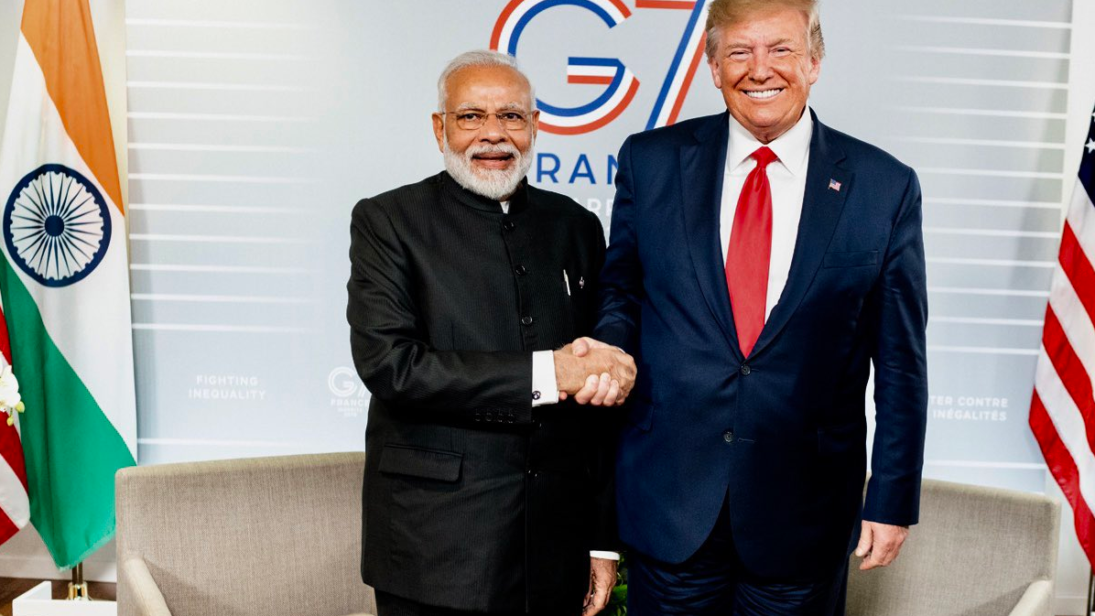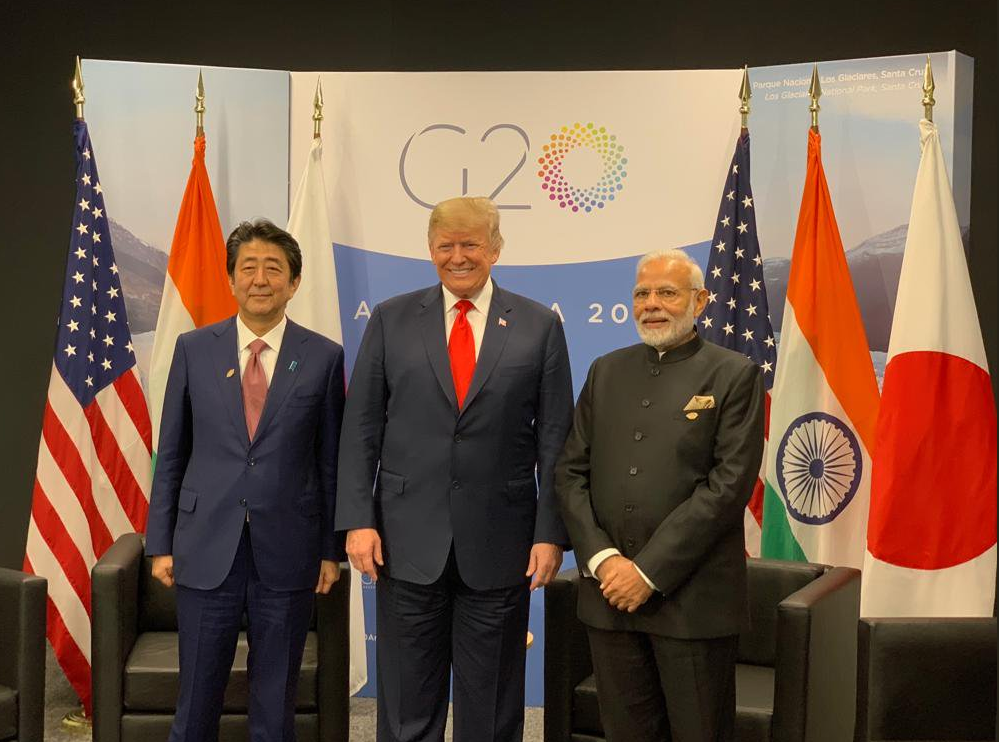
As the United Sates-China trade war goes further south, India must step up to the big table quickly. U.S. President Donald J. Trump and Indian Prime Minister Narendra Modi plan to meet this month on the sidelines of the 2019 United Nations General Assembly (UNGA). As noted at their G-7 summit meeting last month, the two leaders will prioritize trade issues. However, the meeting that will matter more may happen before UNGA — between India’s new Commerce Minister Piyush Goyal and U.S. Trade Representative Robert Lighthizer — as it could change the course of United States-India trade ties like never before.
India needs to accept that it lives in a new reality — and change its strategic calculus accordingly. In 2017, the Trump administration elevated India’s importance in its “Indo-Pacific” vision — a means to balance China’s “infrastructure investments and trade strategies [when used to] reinforce its [repressive] geopolitical aspirations” in the region. While this also serves India’s geostrategic purpose, it does not preclude President Trump from labeling India as a “tariff king.” Unlike past U.S. administrations, the grand promise of the world’s fastest growing large economy as a democratic counterweight to China will not be enough to sober the Trump administration’s hawkish stance on free, fair, and reciprocal trade.
India can no longer hope to propel the overall relationship [with the United States] by relying on progress on the strategic front to offset the persistent irritants on the trade front.
Alas, that time is gone when both nations could bicker about market access issues, pause that fight, and still move forward with larger strategic cooperation. Alyssa Ayres, former U.S. deputy assistant secretary of state, counts the 2008 civil nuclear deal, progress in defense ties since 2005, as well as the growing goods and services trade, as part of this cooperation. The strategic partnership may remain a conceptually sound idea owing to their shared values of preserving a rules-based order and strong people-to-people ties. But today, India can no longer hope to propel the overall relationship by relying on progress on the strategic front to offset the persistent irritants on the trade front.
Fortunately, it is an opportune time to reset at least part of the trade issues and resuscitate momentum. Against the backdrop of the United States-China trade war, India must reform investment policies to woo fleeing American manufacturers and put forward a strategic trade proposal on the table for the United States. On the other hand, in the wake of a successful trade agreement with allies like Japan, the United States must look to strengthen like-minded friends such as India and offset losses to U.S. exporters and importers. If timed well, this dual strategy can dovetail finely with the Indo-Pacific vision, giving teeth to its geoeconomic goals and creating a win-win partnership.
Over the past year, Washington and New Delhi have fallen out over tariff and market access barriers. The last round of the U.S.-India Trade Policy Forum — the primary annual platform for bilateral trade negotiations — ended without a joint statement in 2017. Since then, both sides convened less formal intersessional dialogues to resolve disputes. The United States raised issues related to price controls on medical devices, market access for dairy products, high tariffs on electronic and agricultural goods, and new irritants like data localization and privacy policies. India underscored its ask on relaxing visa regulations that may otherwise target its robust services trade, including labor mobility, among other items.
However, on June 5, the United States terminated preferential tariffs to USD $5.6 billion of Indian exports under its Generalized System of Preferences (GSP), a trade preferences program for developing economies. Indian exporters are expected to feel the pinch with increased competition from peer economies. Subsequently, India imposed its long overdue counter tariffs in retaliation to the U.S. steel and aluminum tariffs. The media also reports that Washington may be considering a Section 301 investigation on India — the same step that initiated the trade war with China.

India must convert these challenges into game-changing opportunities in three ways: One, India can expand its trade footprint on U.S.-imposed tariffs on China — and vice versa. A DBS Bank report rightly notes that the United States-China trade conflict has implications for India given its narrowing trade surplus with the United States and Prime Minister Modi announcing USD $4 billion worth of imports from the United States in the pipeline at the G-7 summit last month; India can also address its large trade deficit with China. Two, India must further reform foreign direct investment rules to capture the diversion in investment flows as manufacturers seek alternative origination destinations. Some U.S. businesses that started off with manufacturing bases in South Korea eventually moved to China and are now looking at Bangladesh, Vietnam, and even other African economies. Three, now in its post-election phase, New Delhi can sweeten a potential early harvest deal with the United States with politically palatable proposals on market access. At the same time, India’s loss of GSP benefits could be offset under such a deal.
At a time when India is undergoing its worst slowdown on Modi’s watch and economists are predicting a U.S. recession, a meaningful Indo-U.S. early harvest agreement would spur a set of confidence-building measures — starting with swift relief to industry on both sides, avenues to mitigate growth slowdown and unemployment, and political wins for both Modi and Trump when they desperately need it.
Simultaneously, as the Trump administration prepares for election in 2020, finalizing key trade agreements will become a high priority. GSP imports from India include raw materials that help U.S. companies remain globally competitive and could otherwise mitigate the growing business uncertainty from worsening United States-China trade ties. Some U.S. lawmakers, led by Representative James Himes, argue that an early harvest deal could help restore some of India’s GSP benefits and also save American companies close to USD $250 million. The United States could take this a step further by “graduating” India out of the GSP program but rolling over some of the mutual benefits into a near-term deal. A GSP graduation would also incentivize India to restructure its trade policy in view of long-term sustainability. Moreover, as some experts note, India’s loss of GSP benefits could be a signal for waning bilateral ties rather than long-term economic losses.
At a time when India is undergoing its worst slowdown on Modi’s watch and economists are predicting a U.S. recession, a meaningful Indo-U.S. early harvest agreement would spur a set of confidence-building measures — starting with swift relief to industry on both sides, avenues to mitigate growth slowdown and unemployment, and political wins for both Modi and Trump when they desperately need it. State-level leaders from both the United States and India are already paving the way for deeper two-way investment and people-to-people ties. Additionally, such a step will provide a healthy reset to the overall bilateral relationship, with relatively synchronized growth of both economic and strategic cooperation.
As for its global strategic calculus, the United States — with its regional partners like India and Japan — could pursue an approach of geostrategic balance, wherein bilateral, trilateral, or regional free trade deals as well as an informal reduction of trade barriers or strategic carve outs for each other can reduce dependence on China, instead of a full-blown trade war. As a bonus, such a policy can also activate the geoeconomic vision of the Trump administration’s Indo-Pacific strategy and preserve a liberal democratic order in the region.
Editor’s note: A version of this piece originally appeared in The Diplomat and has been re-published with permission from the editors.
***
Image 1: Donald Trump via Twitter
Image 2: Narendra Modi via Twitter


